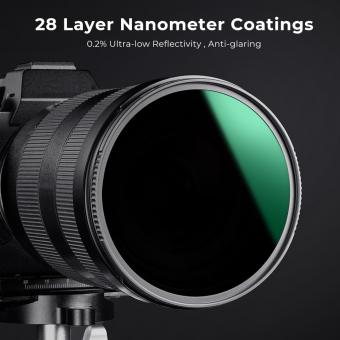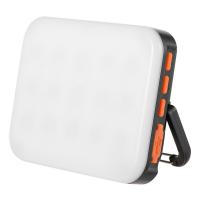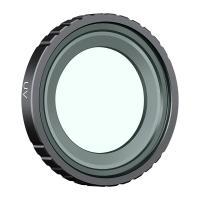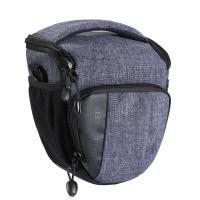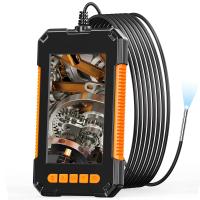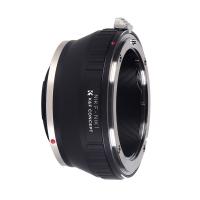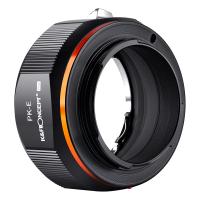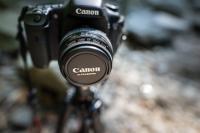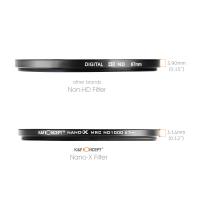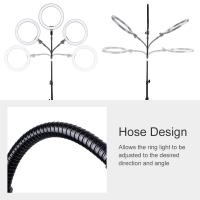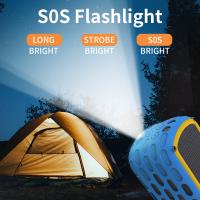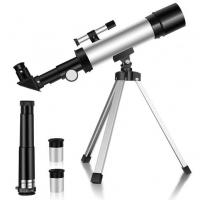Water Motion Blur What Nd Filter?
Water Motion Blur: Choosing the Right ND Filter
Photography is an art that allows us to capture the beauty of the world around us. One of the most captivating techniques in landscape photography is creating a motion blur effect in water. This effect can transform a simple scene into a dreamy, ethereal image. To achieve this, photographers often use Neutral Density (ND) filters. In this article, we will explore the different types of ND filters, how they work, and how to choose the right one for creating stunning water motion blur effects.

Understanding ND Filters
Neutral Density (ND) filters are essential tools in a photographer's kit. They are designed to reduce the amount of light entering the camera lens without affecting the color balance of the image. This reduction in light allows photographers to use slower shutter speeds, which is crucial for capturing motion blur in water.
ND filters come in various strengths, typically measured in stops. Each stop represents a halving of the light entering the lens. For example, a 1-stop ND filter reduces the light by half, a 2-stop ND filter reduces it to one-quarter, and so on. Common ND filter strengths include 3-stop, 6-stop, 10-stop, and even 15-stop filters.
Choosing the Right ND Filter for Water Motion Blur
When it comes to creating water motion blur, the choice of ND filter depends on several factors, including the lighting conditions, the desired effect, and the specific scene you are photographing. Let's break down these factors to help you make an informed decision.
1. Lighting Conditions
The amount of available light plays a significant role in determining the strength of the ND filter you need. In bright daylight, you will need a stronger ND filter to achieve the desired motion blur effect. Conversely, in low-light conditions, a weaker ND filter may suffice.
- Bright Daylight: In bright sunlight, a 10-stop or even a 15-stop ND filter is often necessary to achieve a slow enough shutter speed for significant motion blur. These filters drastically reduce the light, allowing you to use shutter speeds of several seconds or more.
- Overcast or Low Light: In overcast conditions or during the golden hour (shortly after sunrise or before sunset), a 6-stop ND filter may be sufficient. These filters provide a moderate reduction in light, enabling slower shutter speeds without overexposing the image.
2. Desired Effect
The desired effect also influences the choice of ND filter. Different strengths of ND filters produce varying degrees of motion blur. Consider the following scenarios:
- Subtle Blur: If you want a subtle motion blur effect, such as a gentle smoothing of water in a stream or river, a 3-stop ND filter may be adequate. This filter allows for slightly slower shutter speeds, creating a soft, flowing effect.
- Pronounced Blur: For a more pronounced motion blur effect, such as capturing the silky smoothness of a waterfall or the ethereal appearance of ocean waves, a 6-stop or 10-stop ND filter is ideal. These filters enable longer exposures, resulting in a more dramatic blur.
- Extreme Blur: In situations where you want to create an extreme motion blur effect, such as turning a choppy sea into a glassy surface or capturing the swirling patterns of a fast-moving river, a 15-stop ND filter is the best choice. These filters allow for very long exposures, often several minutes, producing a surreal, dreamlike quality.
3. Specific Scene
The specific scene you are photographing also affects the choice of ND filter. Different water bodies and their movements require different approaches:
- Rivers and Streams: For rivers and streams with moderate flow, a 3-stop or 6-stop ND filter is usually sufficient. These filters help create a smooth, flowing effect without completely blurring the water's texture.
- Waterfalls: Waterfalls often require stronger ND filters, such as 6-stop or 10-stop filters, to capture the silky, cascading effect. The strength of the filter depends on the intensity of the waterfall and the lighting conditions.
- Ocean Waves: Capturing the motion blur of ocean waves can be challenging due to their constant movement. A 10-stop or 15-stop ND filter is typically needed to achieve the desired effect, especially in bright daylight.
Practical Tips for Using ND Filters
Now that you have a better understanding of how to choose the right ND filter for water motion blur, let's explore some practical tips for using these filters effectively:
1. Use a Tripod
Long exposures require a stable camera setup to avoid unwanted camera shake. Always use a sturdy tripod to keep your camera steady during the exposure.
2. Compose Your Shot First
Before attaching the ND filter, compose your shot and set your focus. ND filters can make it difficult to see through the viewfinder, so it's best to get everything in place before adding the filter.
3. Use a Remote Shutter Release
To minimize camera shake, use a remote shutter release or the camera's built-in timer. This ensures that you don't accidentally move the camera when pressing the shutter button.
4. Experiment with Shutter Speeds
Don't be afraid to experiment with different shutter speeds to achieve the desired motion blur effect. Start with a few seconds and gradually increase the exposure time until you get the desired result.
5. Check Your Histogram
After taking a shot, check the histogram to ensure that your exposure is correct. ND filters can sometimes lead to underexposed or overexposed images, so adjust your settings accordingly.
6. Be Patient
Creating stunning water motion blur images often requires patience. Take your time to find the right composition, adjust your settings, and wait for the perfect moment to capture the shot.
Conclusion
Neutral Density (ND) filters are invaluable tools for photographers looking to create captivating water motion blur effects. By understanding the different strengths of ND filters and considering factors such as lighting conditions, desired effect, and specific scenes, you can choose the right filter for your needs. Remember to use a tripod, compose your shot first, and experiment with different shutter speeds to achieve the best results. With practice and patience, you'll be able to capture stunning, ethereal images that showcase the beauty of water in motion.






